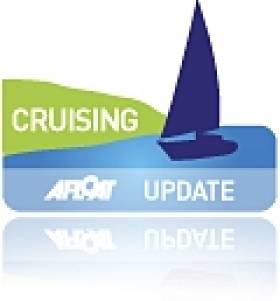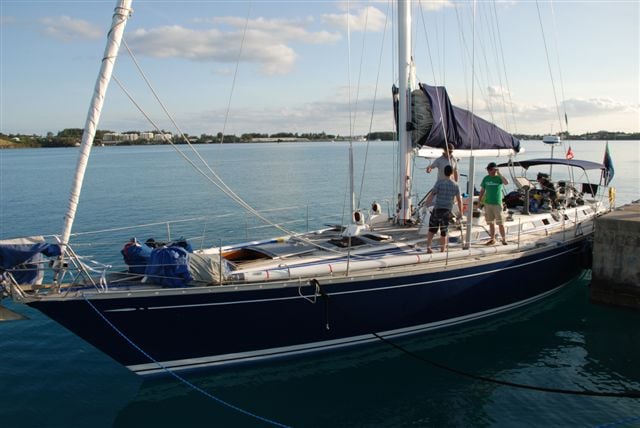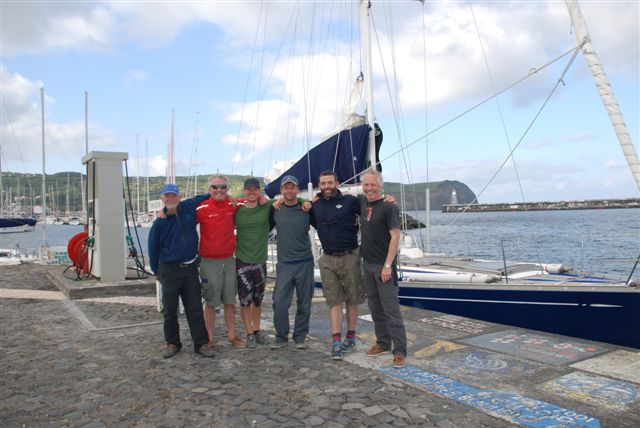Displaying items by tag: Azores
#cruising - Sailing From Bermuda to the Azores on the magnificent yacht Wolfhound III with skipper and lifelong friend Alan McGettigan was an 1,800–mile adventure for Kildare sailor Fin O'Driscoll.
Bermuda is the oldest remaining British overseas territory and the picture postcard town of St. George on the north east corner of the main island is the oldest continuously inhabited English settlement in the new world writes Fin O'Driscoll. The town dates from 1612, when British naval vessel 'Sea Venture' captained by Admiral Sir George Somers was deliberately steered onto a nearby reef to escape a storm. In 1996, the town was twinned with Lyme Regis, in Dorset, the birthplace of Admiral Somers and in 2000, it was designated as a UNESCO World Heritage Site.
Three friends and I travelled from Dublin to St. George in early May where we waited a few days for a boat sailing down from Newport, Rhode Island. Having enjoyed sailing over the years such as cruising in the Med, racing in Dublin bay and coastal trips in the Irish Sea, I knew that this was going to be different. An 1,800 mile crossing from Bermuda to the Azores.
Bermuda has a population of 62,000 and the economy is based on offshore insurance and tourism with the territory enjoying the world's highest GDP per capita for most of the last two decades. The islands have a humid sub-tropical climate and are warmed by the Gulf stream with water temperatures reaching a tepid 22C, making it a wonderful place to swim compared to the chilly Irish Sea. Interestingly, a survivor of the 'Sea Venture' shipwreck was one John Rolfe, whose wife and child died and were buried in Bermuda. Later in Jamestown he married Pocahontas (of Disney fame!), a daughter of the powerful Powhatan, leader of a large confederation of Algonquian tribes in coastal Virginia.
Our vessel, Wolfhound III arrived from Newport on 8th May. She is a magnificent yacht, owned and skippered by Alan McGettigan (RIYC), a lifelong friend from Dublin. I am from Kildare and the three other Irish sailors were William Reilly from Greystones, Barry O'Sullivan and John Campbell from Dublin.
Wolfhound III alongside in St. George
Wolfhound III is a classic Nautor Swan 59' sloop, weighing in at 30 tonnes and sporting an 80 foot mast. She has 4 cabins, can comfortably sleep 10 crew and is complete with a large saloon and galley, a myriad of instrumentation and no less than 14 winches plus 2 grinders on deck! A lot of other boats were arriving for the ARC (Atlantic Rally for Cruisers) 2014 race which was due to leave St. George for the Azores on the 14th so the marina was buzzing. Bermuda is a very expensive place to shop, which we soon found out when we completed our provisioning for 2 weeks at a cost of $2,100 and that excluded any alcohol as she was a dry boat!

Leaving St. George heading East
We departed on Sat 10th May at 14:00 in idyllic sailing conditions and enjoyed three days of fine weather, which allowed us get used to the boat, champagne sailing without the champagne! Three of the crew are keen amateur chefs and so we enjoyed fine cuisine on the high seas. As we headed North East to catch the prevailing winds to the Azores, we ran into heavy weather as forecast. We encountered a large low pressure system, so the westerly winds on the south side of the system swept us towards our destination. Barometer readings dropped 15millibars in 6 hours followed by gusts of up to 40knots and 25 foot seas, which made for an exciting and challenging passage.
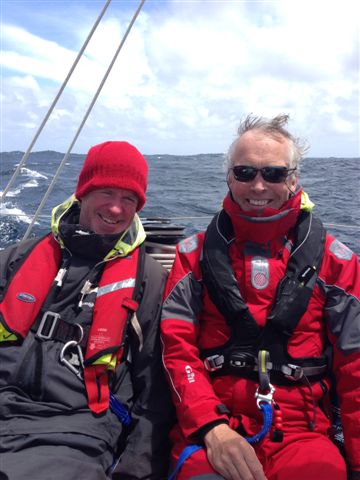
Alan McGettigan (left) and article author and crew man Fin O'Driscoll
The crew in full offshore gear, wore lifejackets at all times and were strapped onto lifelines while on deck or in the cockpit. At night we were on two hour shifts and as the boat was rolling a lot, the culinary delights from the galley were replaced by storm rations; Campbell's soup, tinned ravioli and copious amounts of Red Bull to keep us alert through the long nights.
The gales lasted five days and with winds averaging 25 knots our trip log recorded us surfing down big Atlantic rollers at up to 15 knots, which is fast for a cruising yacht. As is the norm in these weather conditions the boat is tested to the limit and Wolfhound III performed admirably. The port jib sheet parted when a large bow wave hit the fully unfurled headsail and a full knock down at 05:15 one morning rolled everyone out of their bunks (except the two on watch) however she righted herself very quickly. We learned later that British boat Cheeki Rafiki was in the same storm system 400 miles to the west of us and unfortunately her four sailors were lost when the keel sheared off and she capsized before they could release their liferaft.
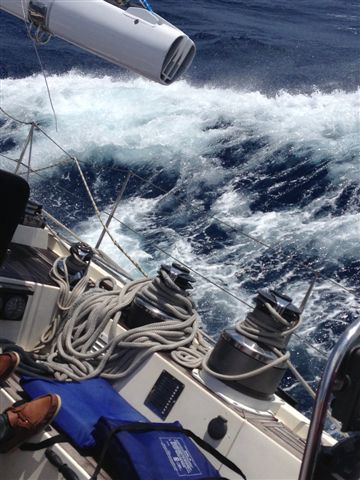
Above and below sailing through big seas
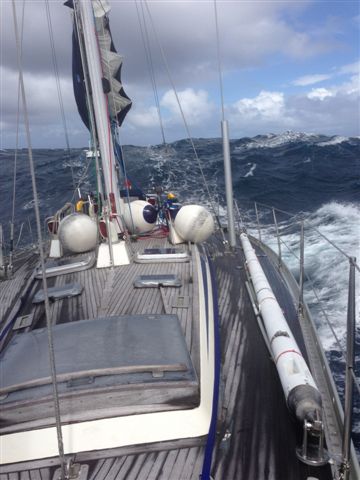
In the two weeks at sea, we saw numerous dolphins, porpoises and several breaching whales. The pods of dolphins had a habit of swimming alongside in the early mornings as the sun rose over the bow, a very therapeutic way to start the day. Yes, the Atlantic Ocean is an unbelievably large and empty place as we saw only one other sailboat and three freighters during our voyage. Sailing at night with full canvas up and steering by the stars across the pitch black ocean is an unworldly experience. Combine that with the sparkling luminous green phosphorescence in our wake, a full moon and scudding black clouds for dramatic effect. On day nine, the winds had abated and the sea was millpond calm so we stopped the boat and all dived in (leaving at least one person on board as we had all seen the film Adrift!) for a mid Atlantic swim. A strange sensation considering the nearest land was 2 kms straight down and the nearest coastline was over 1,000 kms away.
Land Ahoy! On day thirteen the Azores appeared on the horizon and we arrived safely in Horta at 19:00, 12 days and 2 hours (including 3 hour time difference from Bermuda) after a distance of 1,900 miles. After tying alongside in the bustling port, we checked in at immigration and immediately proceeded to Peter's Café Sport, a world renowned crossroads and watering hole for transatlantic sailors. The long awaited hot showers had to wait until the following morning as there were celebrations to be had. After 13 days at sea, it took us all a while to get our land legs back and the occasional stumble was not at all due to the pints of Superbock consumed after our dry boat experience.
The happy crew quayside in Horta
Horta on the island of Faial has the fourth most visited marina in the world and is overlooked by the very impressive 2,350m Mount Pico on the neighbouring island. The Azores are a Portuguese overseas territory and the nine main islands stretch over 230 miles from Flores in the West to Santa Maria in the East. Officially, the islands were discovered in 1431 by Portuguese explorer Gonçalo Velho Cabrall and Christopher Columbus famously stopped over at Santa Maria (named after his ship) in 1493 on his way back from discovering the New World. During the 18th and 19th century the islands were host to many prominent figures, including Chateaubriand, the French writer who passed through upon his escape to America during the French revolution and Mark Twain published "The Innocents Abroad" in 1869, a travel book, where he described his time in the Azores. The islands straddle an active junction between three of the world's largest tectonic plates (the North American Plate, the Eurasian Plate and the African Plate) resulting in a lot of seismic and volcanic activity in this region of the Atlantic.
After a memorable night celebrating in Horta, the four of us left Wolfhound III and flew back to Dublin via Lisbon. Following the scheduled crew change, the boat has since sailed the final 850 miles onto Lagos in southern Portugal, completing her full transatlantic crossing from the US mainland to Europe. A real marine adventure and sailing the Atlantic is definitely one for the bucket list!
#MARINE RESOURCES - The first event of the Atlantic Forum to inform the EU Strategy for the Atlantic (EUSA) will be held on Faial Island in Portugal's Azores on Friday 21 September.
The inaugural meeting will be held under the them of 'Coastal and Deep Sea Natural Resources'.
According to the Marine Institute, the momentum of the Atlantic Strategy towards 'Blue Growth', enhancing growth and jobs, "will come through the development of marine renewable energies, new visions for aquaculture production, innovative scientific research, promotion of maritime culture and leisure in the Atlantic, including cruising and nautical sports, seabed mining and associated technologies, biotechnologies and greener shipping and an increase in short-sea shipping."
The aim of the Atlantic Forum is to ensure awareness of the EUSA and EU funding processes and to provide stakeholders with a platform to input to the EUSA Action Plan (2014-2020) which will guide the implementation of the EUSA.
The EUSA identifies a number of areas where there is scope for EU-level action to support the coastal and maritime economies of the member states along the Atlantic seaboard.
Interested participants can access further information on the Atlantic Forum, the Azores Meeting, as well as information on the subsequent Atlantic Fora meetings (Brest in October; Bilbao in November; Cardiff in February 2013; and Galway in March 2013) at the European Commission's Maritime Affairs website.


























